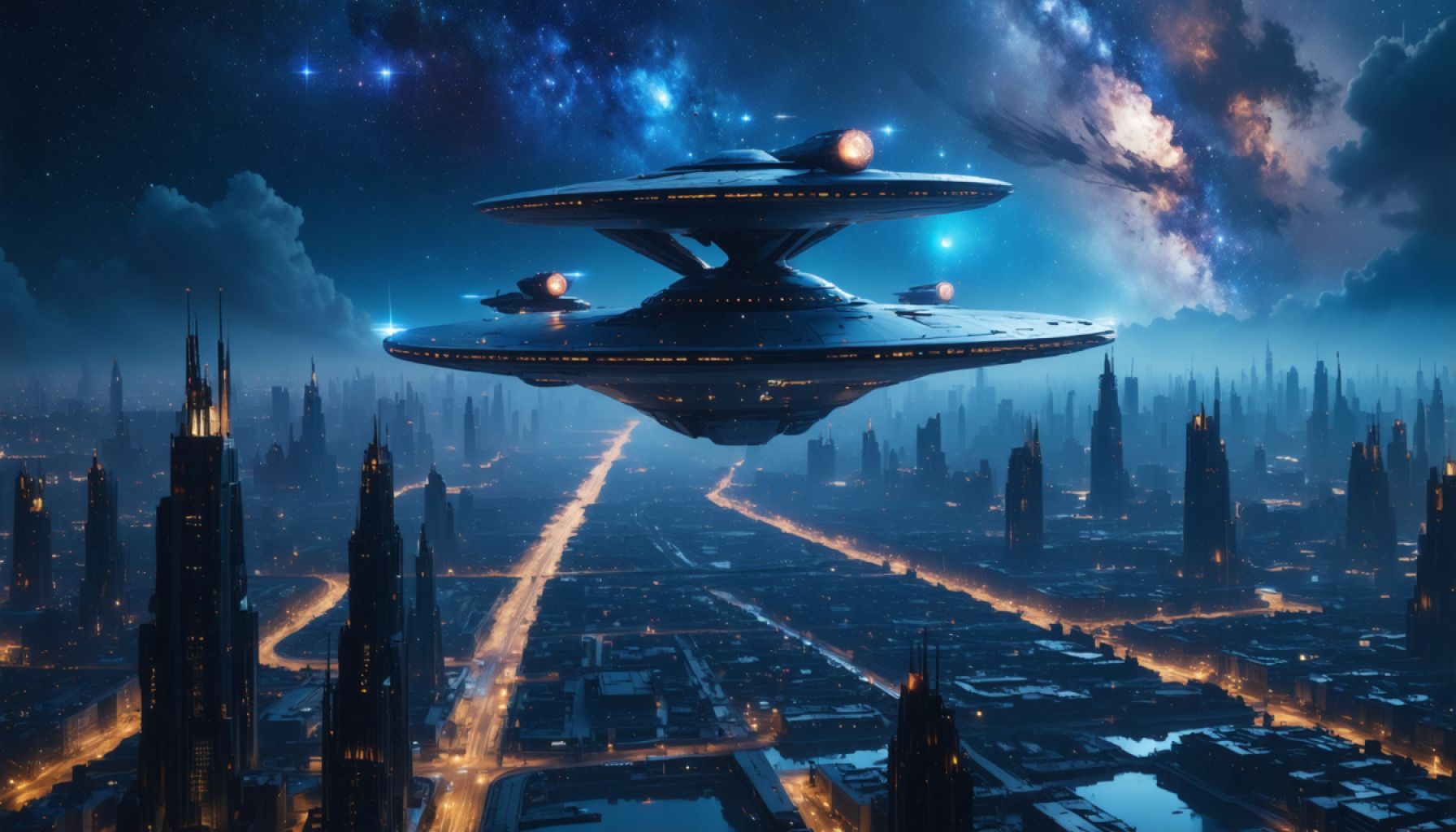- Musk aims to transform SpaceX’s Texas launch site into “Starbase,” a city that integrates space exploration with community living.
- Residents are voting on the proposal, which seeks to balance innovation with environmental responsibility.
- Proponents highlight Starbase’s potential to generate jobs, advance technology, and boost the economy, drawing parallels to Silicon Valley.
- Critics raise concerns about the environmental impact and the dominance of a single enterprise in a company town setting.
- The project reflects a modern take on pioneer spirit, similar to historic westward expansion.
- This initiative raises broader questions about the coexistence of urban design, technology, and nature.
- The outcome of the Starbase vote could influence future city designs as innovation hubs in harmony with nature.
Beneath the vast Texan sky, where the roar of rockets cuts through the serene landscape, the dream of a new city flickers to life. In this unassuming slice of the Lone Star State, Elon Musk envisions a transformation—one that could redefine our relationship with the cosmos and community living.
Supporting a vision to turn SpaceX’s Texas launch site into “Starbase,” residents are casting their votes. Musk’s proposal isn’t merely a venture into real estate; it’s an extension of his audacious ambition for the stars. The proposed city of Starbase could become a hub of innovation, teeming with brilliant minds all bound by the common goal of reaching beyond Earth’s atmosphere.
The concept of Starbase is not without its skeptics. Critics argue that such an initiative, while forward-thinking, poses substantial environmental risks. The ecological footprint of an expansive spaceport coupled with the rise of a company town, where a single enterprise dominates economic and political life, raises questions about sustainability and autonomy. The environmental implications of continuous launch activity, in particular, fuel debates about the balance between advancing technology and preserving our planet.
Yet, Musk’s proponents focus on potential benefits reminiscent of Silicon Valley’s birth. Jobs, technological advancements, and a revitalized economy are the alluring promises of this starry-eyed plan. With SpaceX’s state-of-the-art facilities already dotting the horizon, the groundwork for such a metamorphosis seems plausible. The location, currently a patchwork of open fields and launchpads, may soon be the cradle of next-generation innovations.
The vision for Starbase embodies a modern twist on the age-old American pioneer spirit. Just as those who sought new frontiers in the West reshaped the course of the nation, Musk’s venture could herald a new era, where urban design and space exploration are intertwined. However, as history reminds us, progress often comes with the price of preservation, and the choices made today will echo through generations.
Ultimately, the debate over Starbase underscores a broader dialogue: how do we balance ambition with responsibility? Can a space-age utopia coexist harmoniously with its terrestrial neighbors? As the votes are tallied, the outcome will serve as a litmus test not just for SpaceX, but for the future of cities as incubators of innovation in harmony with nature.
Starbase beckons with the promise of connectivity, discovery, and prosperity—if the tides of history and technology align favorably.
Is Elon Musk’s Starbase the Future of Urban Living and Space Exploration?
The Vision Behind Starbase
Elon Musk’s proposal to transform SpaceX’s Texas launch site into the city of “Starbase” is a bold vision with far-reaching implications. The concept intertwines urban development with space exploration, aiming to create a vibrant hub for innovation and technology. Musk envisions a community where pioneering architects, engineers, and scientists work towards the common goal of reaching beyond Earth’s atmosphere.
Key Features of Starbase
1. Advanced Infrastructure: Starbase would boast cutting-edge facilities designed to support SpaceX’s space missions, potentially including residential zones, research labs, and commercial areas.
2. Economic Opportunities: Like the Silicon Valley boom, Starbase could revitalize the local economy, providing numerous jobs in tech and supporting industries.
3. Technological Innovation: The presence of SpaceX facilities will likely attract tech companies and startups focused on aerospace and related technologies.
Addressing Environmental Concerns
Critics raise valid points about the potential ecological impact of constant rocket launches. However, proponents counter that the development can incorporate sustainable practices:
– Eco-Friendly Design: Emphasizing green architecture and renewable energy sources could mitigate environmental impacts.
– Wildlife Conservation: SpaceX could implement thorough environmental impact assessments and conservation initiatives.
Real-World Use Cases
– Educational Hub: Starbase could host institutions dedicated to space and technology, fostering the next generation of innovators.
– Tourism: With SpaceX’s space tourism pursuits, Starbase may become a destination for space enthusiasts.
Market Forecast and Industry Trends
According to a report by the Aerospace Industries Association, the global space industry is projected to grow significantly, potentially reaching over $1 trillion by 2040. Starbase could place Texas at the forefront of this burgeoning sector.
Pros and Cons Overview
Pros:
– Job creation and economic boost.
– Attraction of global talent and innovation.
– Enhanced capabilities for space exploration missions.
Cons:
– Potential environmental damage if not managed properly.
– Risk of creating a “company town” with limited economic diversity.
– Challenges in integrating into the existing community infrastructure.
Implications for Future Urban Development
The Starbase initiative raises questions about the balance between innovation and environmental stewardship. It sets a precedent for future cities designed around space exploration, which will need to integrate advanced technology with sustainable practices.
Actionable Tips for Those Interested in Starbase
– Investment Opportunities: Keep an eye on related stocks and companies that may benefit from this development.
– Career Prospects: Explore educational paths in aerospace, tech, and environmental sciences to position yourself for jobs in this emerging sector.
Final Thoughts
Starbase symbolizes a new frontier in urban and space development. If executed responsibly, it could set a benchmark for blending technological advancement with ecological sustainability. As discussions continue, stakeholders must consider both the ambitious potential and the environmental responsibilities of this pioneering venture.
For further details on SpaceX and its projects, visit SpaceX.
